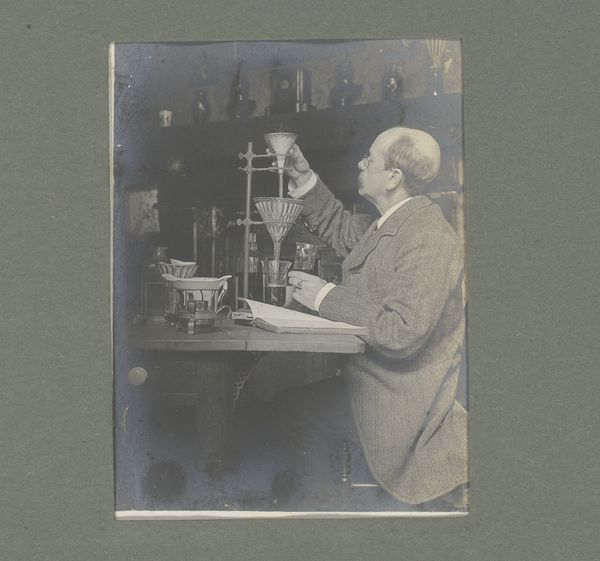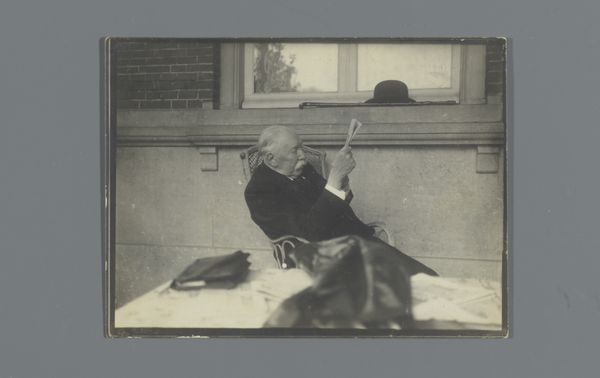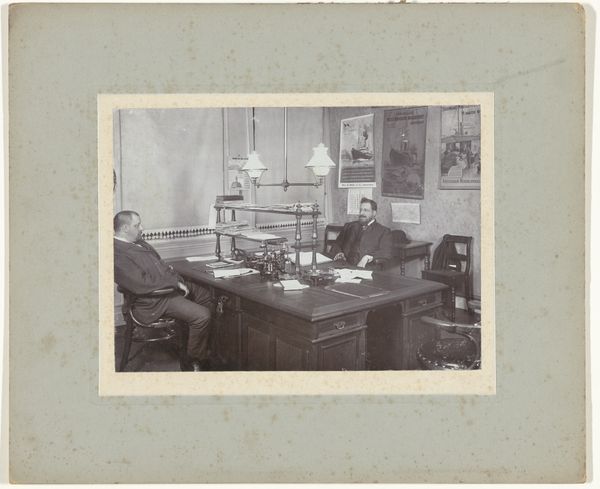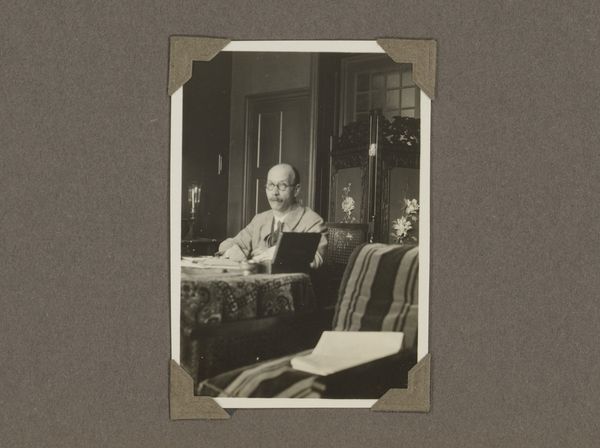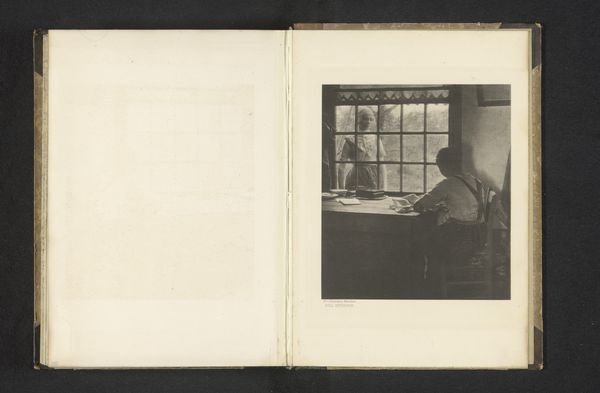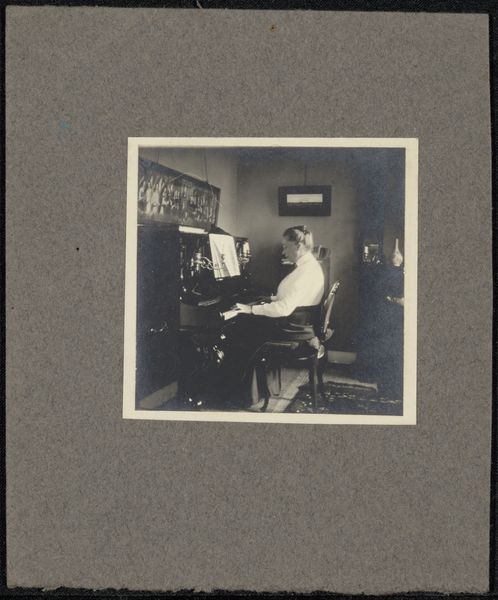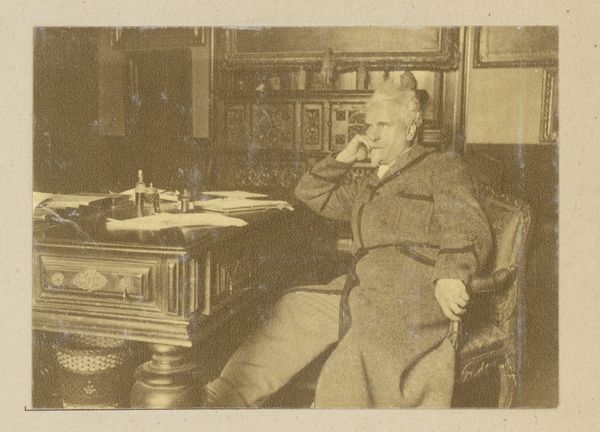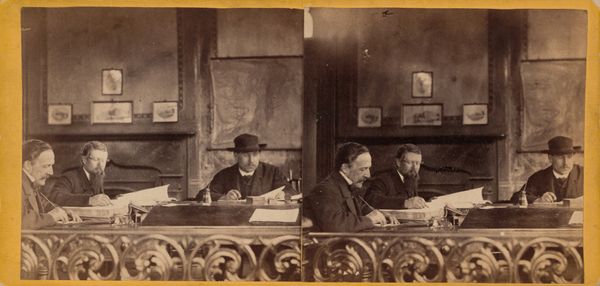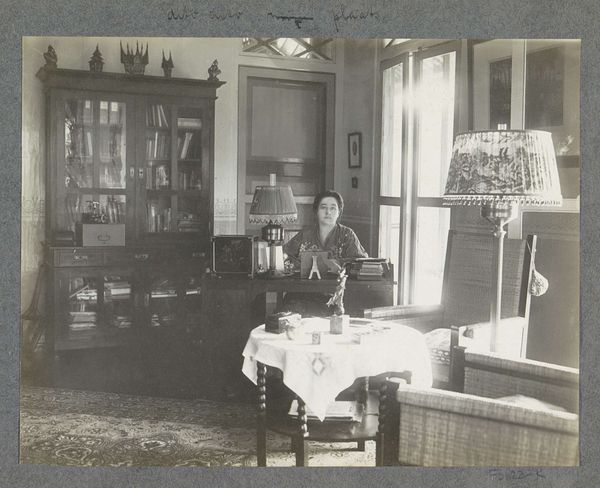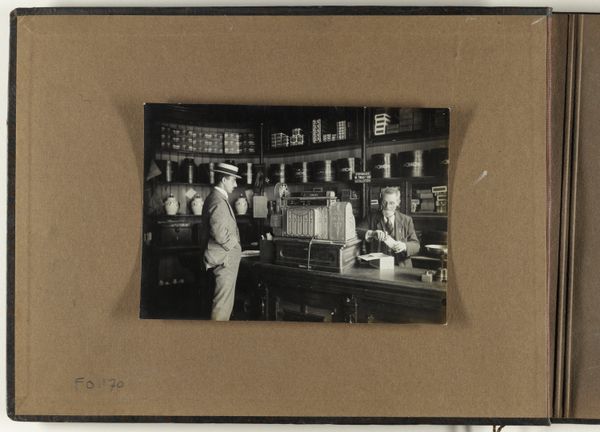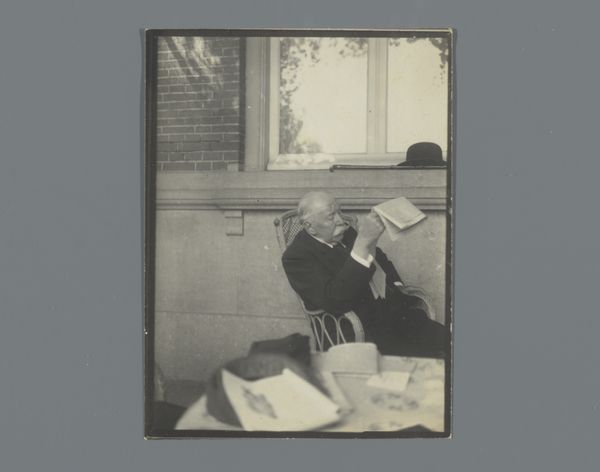
photography, gelatin-silver-print
#
portrait
#
photography
#
intimism
#
gelatin-silver-print
Dimensions: height 66 mm, width 98 mm
Copyright: Rijks Museum: Open Domain
Curator: The intimacy captured in this gelatin silver print is striking. This is "Willem Witsen at a Desk in His Boat" taken circa 1911, by George Hendrik Breitner, now residing here at the Rijksmuseum. Editor: It feels muted, introspective. The sepia tones soften the city outside the window, making it feel less intrusive. The subject appears absorbed in thought, doesn't he? Almost melancholy. Curator: Knowing Witsen and Breitner's interwoven circles within the art scene, the picture speaks to a specific intersection. Here we see Witsen, the wealthy artist, writer, and member of the Amsterdam Impressionism movement, contained within the privileged space of his boat, a literal floating studio. The photograph encapsulates the intersection of class, artistic expression, and the limitations—or freedoms— afforded by societal structures of the time. Editor: Absolutely. There is the window, a loaded symbol. Not just any window, but a view of the water and canal houses. This recurs across Dutch paintings as an emblem for Dutch identity. You cannot detach from that context when trying to access your response to the artwork in its pure and direct emotional presence. Curator: Yes, it serves almost like a proscenium arch. Consider also the composition, with its debt to Dutch 17th century painting: it subtly reinforces a visual language of established social and artistic hierarchies that these artists, including Breitner and Witsen, both engaged with and, in their own ways, challenged. Editor: Even the glass bottle on the table becomes significant. Its darkened form, combined with what appears to be a full cup next to the papers, suggests an attempt to find inspiration or respite within the confines of his working hours. Curator: We can think of how intimacy itself became an aesthetic and artistic position from which to interpret life's greater complexities in those years before the First World War. And the photo is an exploration into a male space. What did that represent then, and now? The visual rhetoric implies power but also an ennui which, arguably, drove modernity's artistic expression. Editor: Agreed. Thinking of its cultural weight gives me a broader context to understand this private, still moment. Curator: Well, after reflecting on the social dimensions, I see this photo anew. Editor: And, with some historical depth, I now understand its deeper cultural resonances, too.
Comments
No comments
Be the first to comment and join the conversation on the ultimate creative platform.
